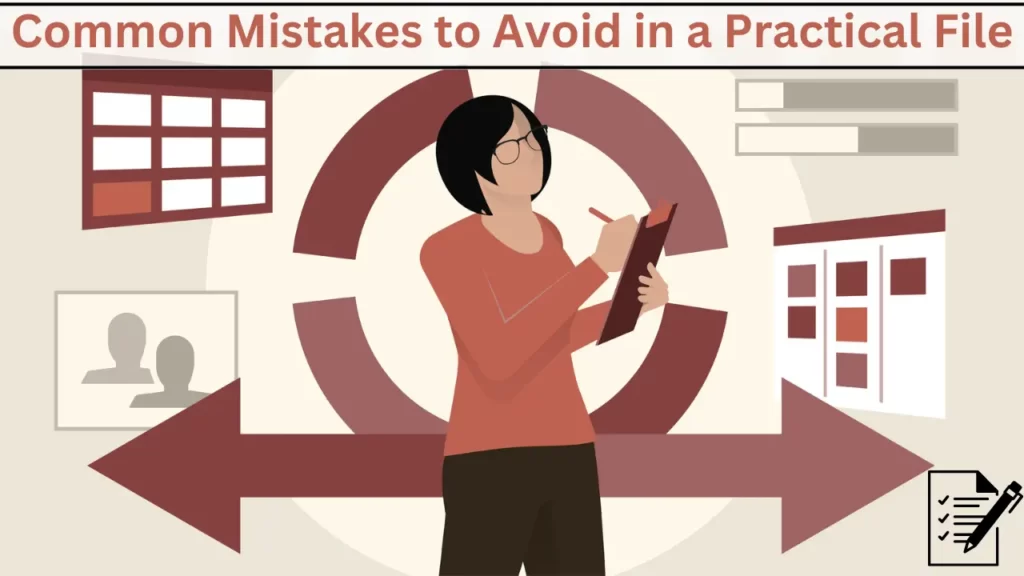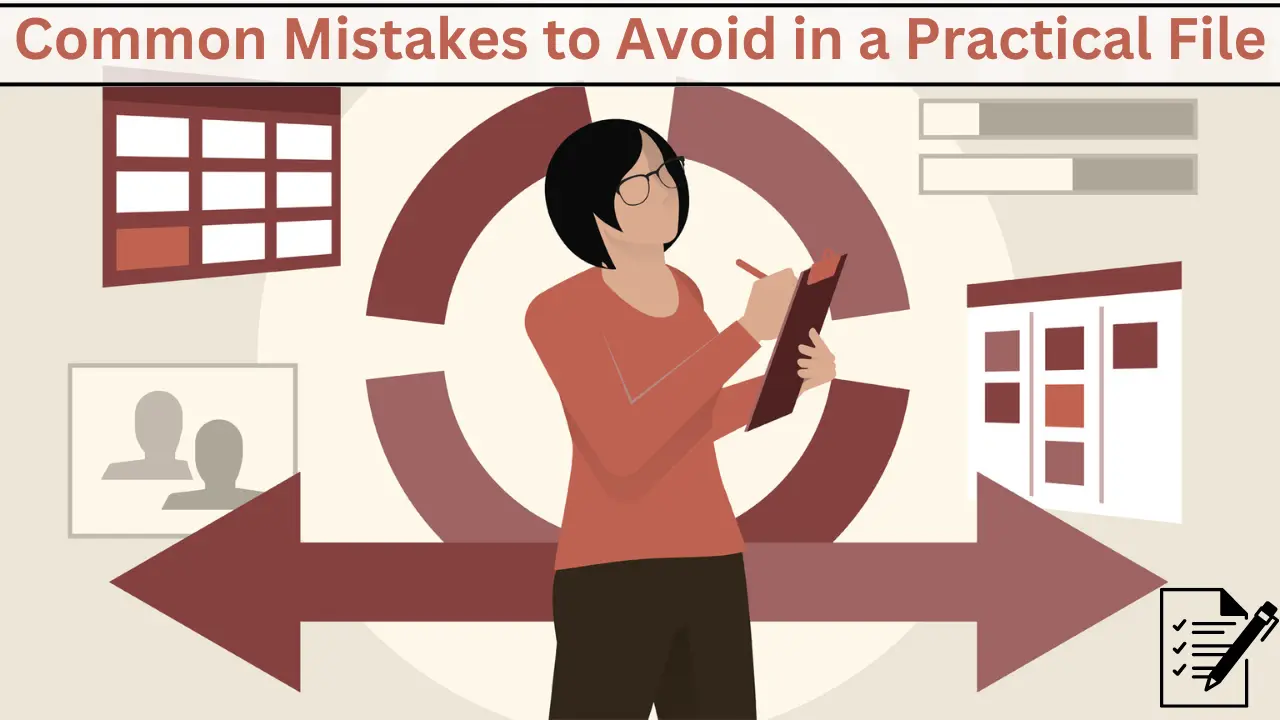
Are you currently working on a practical file and want to ensure its quality and effectiveness? It’s essential to be aware of the common mistakes that can hinder the success of your practical file. In this article, we will discuss the topic of “Common Mistakes to Avoid in a Practical File.” By understanding and avoiding these mistakes, you can significantly improve the organization, accuracy, and overall presentation of your practical file. Whether you are a student or a professional, this article will provide you with valuable insights and practical tips to help you create an outstanding practical file. So, let’s delve into the discussion and learn how to steer clear of these common mistakes, allowing your practical file to shine and make a lasting impression.
Lack of Organization
Missing Cover Page
A cover page is an essential component of a practical file as it introduces key information such as the title, your name, the course or subject, and the date. Omitting a cover page can create confusion and make it difficult for readers to identify and differentiate your practical file from others. Always include a well-designed and informative cover page to make a positive first impression.
Absence of Table of Contents
Including a table of contents is crucial for easy navigation through your practical file. It allows readers to quickly locate specific sections or experiments within the file. Failing to include a table of contents can lead to frustration and inconvenience for readers. Ensure you provide a clear and detailed table of contents, listing the different sections and their corresponding page numbers.
Poor Formatting
Maintaining consistent formatting throughout your practical file is essential. Inconsistent font styles, sizes, or spacing can make the document appear unprofessional and disorganized. Pay attention to formatting details such as headings, subheadings, bullet points, and indentation to ensure a visually appealing and well-structured practical file.
Incomplete or Incorrect Information
Insufficient Background Information
Providing sufficient background information is crucial when documenting practical experiments or projects. Failing to include relevant context and background details can make it difficult for readers to understand the purpose and significance of your work. Always provide a brief overview of the experiment’s objectives, methodology, and relevant theories or concepts to provide necessary context.
Inaccurate Data
Accuracy is of utmost importance when presenting experimental data or research findings in your practical file. Any errors or inaccuracies in the data can undermine the credibility and reliability of your work. Double-check and verify your data to ensure its accuracy before including it in your practical file.
Lack of References
Citing sources and providing references is essential to acknowledge the work and ideas of others. Neglecting to include proper references can result in plagiarism and academic dishonesty. Make sure to cite all sources, including research papers, textbooks, and online resources, following the required citation style specified by your institution.
Inadequate Presentation
Inconsistent Font and Formatting
Maintaining consistency in font styles, formatting, and overall presentation is crucial for a professional-looking practical file. Avoid using different fonts, font sizes, or formatting styles within the same document. Stick to a uniform style throughout your file to maintain a visually appealing and cohesive presentation.
Cluttered Layout
A cluttered layout can make it difficult for readers to navigate through your practical file and locate specific information. Ensure you maintain sufficient spacing, use clear headings and subheadings, and organize content in a logical and structured manner. A clean and well-organized layout enhances readability and comprehension.
Lack of Visuals
Incorporating visual aids such as diagrams, charts, and graphs can significantly enhance the understanding and presentation of your practical file. Failing to include relevant visuals can result in a text-heavy and monotonous document. Incorporate appropriate visuals to supplement your explanations and make your practical file more engaging and visually appealing.
Grammatical and Spelling Errors
Poor Proofreading
Thoroughly proofreading your practical file is crucial to eliminate grammatical and spelling errors. Neglecting this step can create a negative impression on readers and undermine the professionalism of your work. Take the time to carefully review your document, ensuring correct grammar, proper punctuation, and accurate spelling.
Incorrect Grammar
Improper grammar can hinder the clarity and coherence of your practical file. It is essential to use correct grammar and sentence structure to convey your ideas effectively. If you are uncertain about grammar rules, consider using grammar-checking tools or seeking assistance from a peer or instructor.
Misspelled Words
Misspelled words can detract from the overall quality of your practical file. Always double-check the spelling of words, especially scientific terms or technical jargon. Utilize spelling-checking tools or dictionary resources to ensure accurate spelling throughout your document.
Ignoring Guidelines and Instructions
Failure to Follow the Required Format
Different educational institutions or organizations may have specific guidelines and formats for practical files. Disregarding these guidelines can lead to penalties or the rejection of your file. Familiarize yourself with the required format and ensure you adhere to it diligently.
Disregarding Word Limits
Word limits are often provided for practical files to encourage concise and focused writing. Ignoring these limits may result in an unnecessarily lengthy or verbose file. Make sure to respect the word limits and prioritize the inclusion of relevant information while maintaining a concise and coherent writing style.
Ignoring Submission Deadlines
Timely submission of your practical file is crucial to avoid penalties or negative consequences. Ignoring submission deadlines can reflect poorly on your commitment and dedication to the task. Set up a schedule and allocate sufficient time for each section of your practical file to ensure you can meet the submission deadline.
Conclusion
We have discussed the Common Mistakes to Avoid in a Practical File in this article, you can ensure that your practical file is well-organized, informative, and visually appealing. Remember to pay attention to organization, accuracy, presentation, grammar, and adherence to guidelines. Taking these factors into account will enhance the quality of your practical file and make a positive impression on readers and evaluators.
FAQs
The cover page is essential as it provides key information and introduces your practical file. It helps in distinguishing your file from others and creating a professional impression.
Yes, including relevant visuals like images, diagrams, charts, and graphs can greatly enhance the presentation and understanding of your practical file.
Absolutely! Thoroughly proofreading your file helps eliminate grammatical and spelling errors, ensuring a polished and professional final document.
Adhering to word limits is important as it demonstrates your ability to convey information concisely. It also shows that you can prioritize relevant details and follow guidelines.
If you have trouble understanding the guidelines, it is recommended to seek clarification from your instructor or supervisor to ensure you meet the requirements accurately.
You check our Hindi blog: visit blog
Thanks for visiting our website, Have a nice day.
